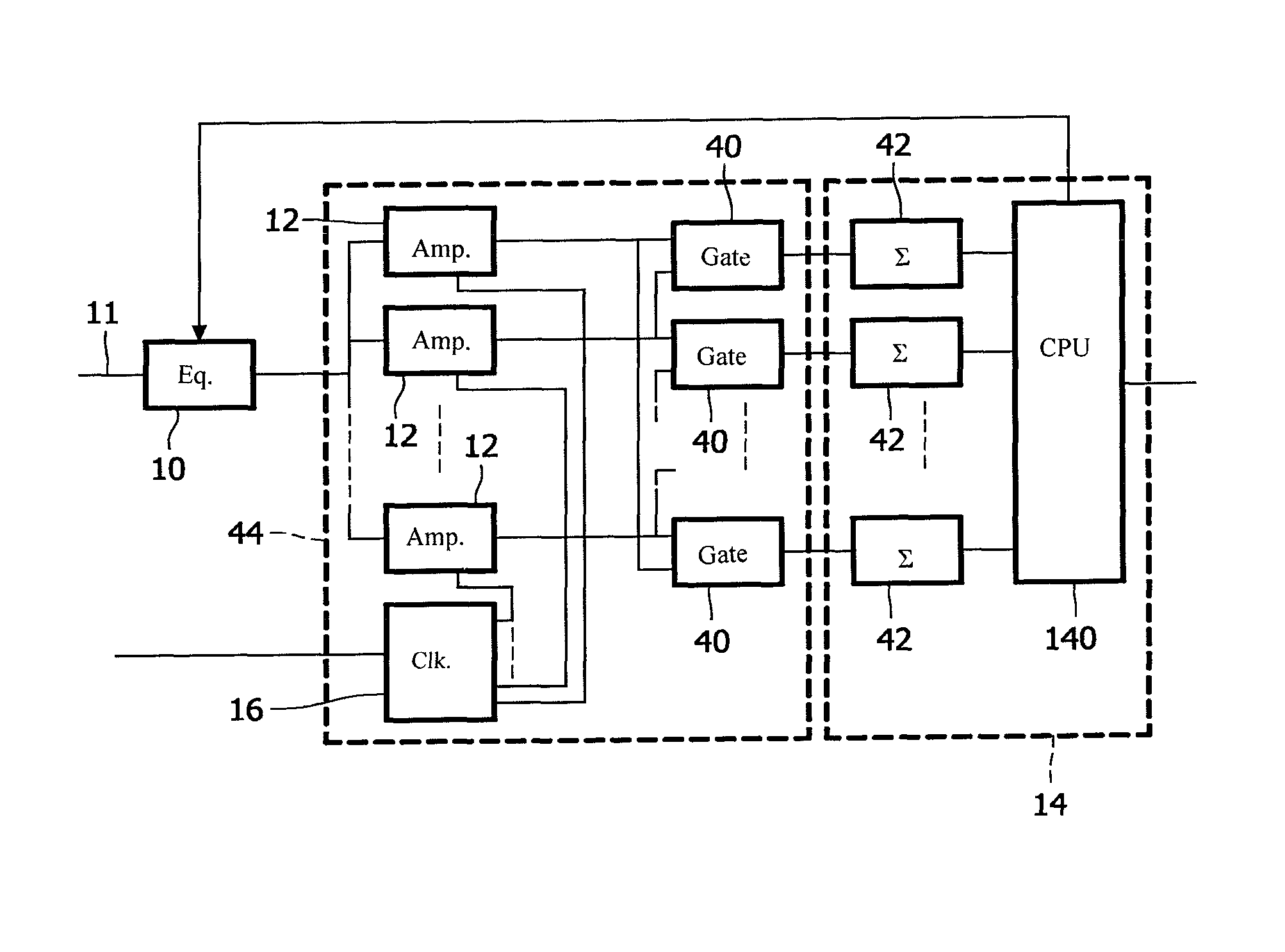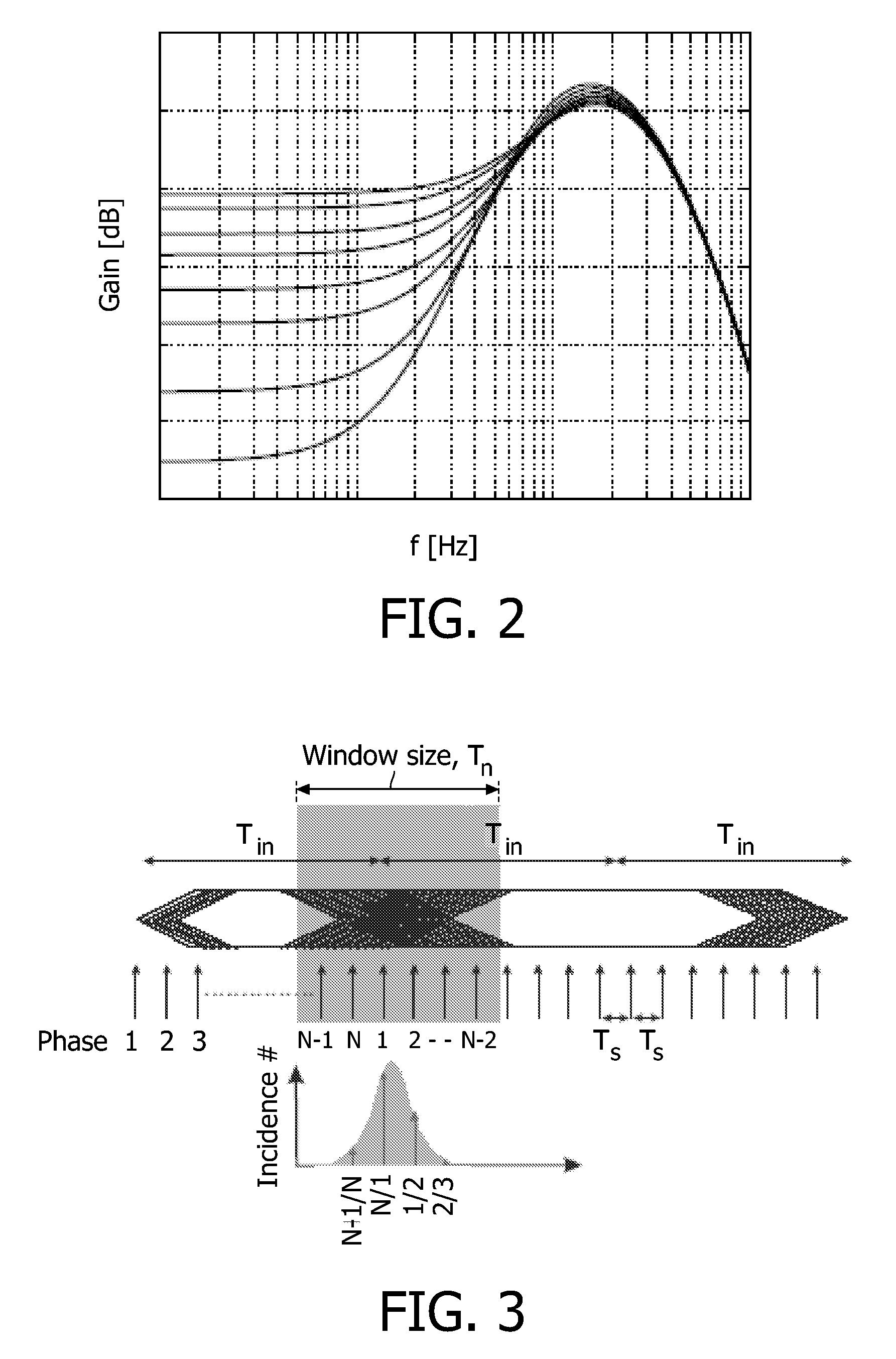Data communication circuit with equalization control
a data communication circuit and equalization control technology, applied in the field of data communication circuits, can solve the problems of deterioration of rx input signals, unreasonable bit error rates of data recovery on the receiver side, and worsening of above mentioned problems, so as to reduce power consumption and circuit area, increase the maximum achievable speed, and reduce power consumption
- Summary
- Abstract
- Description
- Claims
- Application Information
AI Technical Summary
Benefits of technology
Problems solved by technology
Method used
Image
Examples
Embodiment Construction
[0033]FIG. 1 shows a simplified block diagram of a receiver circuit for synchronous reception. The circuit comprises an adaptable equalizer 10, a plurality of sampling amplifiers or samplers 12, a digital post-processing circuit 14, a clock recovery circuit 16. A circuit input 11 is coupled to a signal input of equalizer 10, which has an output coupled to each of sampling amplifiers 12. Outputs of sampling amplifier 12 are coupled to digital post-processing circuit 14. Digital post-processing circuit 14 has a first output coupled to a signal output 15 of the circuit and a second output coupled to a setting input of equalizer 10. Clock recovery circuit 16 has outputs coupled to sampling amplifiers 12. An input of clock recovery circuit may be coupled to circuit input 11 or to an external clock source, or to a switch for selecting between a circuit input 11 and an external clock source. Instead of clock recovery circuit 16 a clock multiplying circuit may be used.
[0034]In operation sam...
PUM
 Login to View More
Login to View More Abstract
Description
Claims
Application Information
 Login to View More
Login to View More - R&D
- Intellectual Property
- Life Sciences
- Materials
- Tech Scout
- Unparalleled Data Quality
- Higher Quality Content
- 60% Fewer Hallucinations
Browse by: Latest US Patents, China's latest patents, Technical Efficacy Thesaurus, Application Domain, Technology Topic, Popular Technical Reports.
© 2025 PatSnap. All rights reserved.Legal|Privacy policy|Modern Slavery Act Transparency Statement|Sitemap|About US| Contact US: help@patsnap.com



